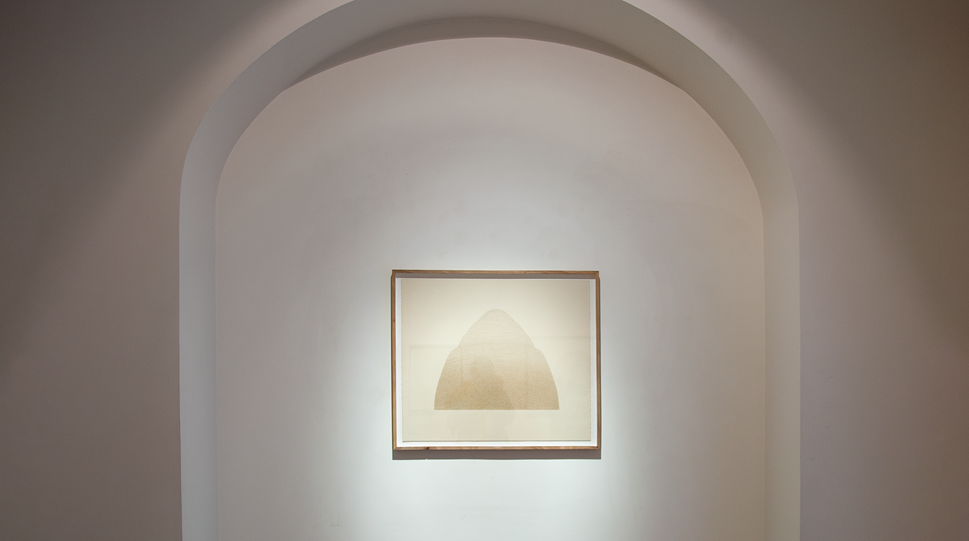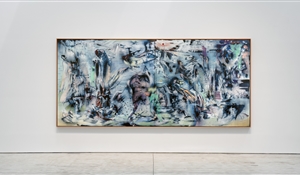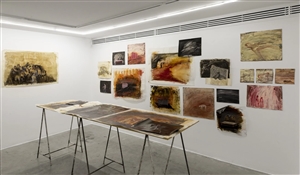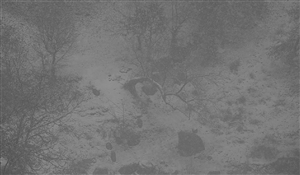A Review of Vahid Hakim's Show at Assar Gallery
02 Jul 2022Original text in Farsi by Sale Sharifi
Translated to English by Parichehr Ghanami
From November 26 to December 24 a solo show of Vahid Hakim's artworks entitled "About Knotting the Air" is on display at Assar Gallery. Vahid Hakim is the kind of artist who has an individual specific aesthetic approach. All these years he has been committed to his visual perception and has made images that he believes in. Faith and perseverance are two factors that caused the consolidation of his position and involved the audience in a novel visual world. Hakim is patient in the way of his career. He doesn't insist on showing his artworks consecutively. The important issue for him is the quality of the desired image he makes.
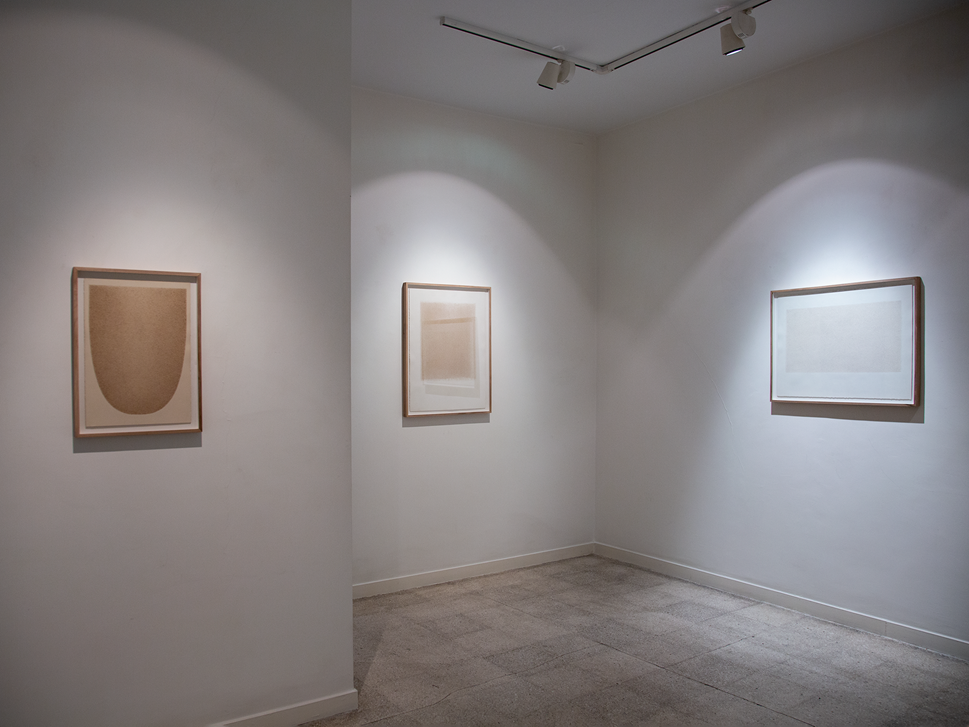
Vahid Hakim | About Knotting the Air | Installation View | Assar Gallery | 2021
The appearance of Vahid Hakim's artworks is representative of a kind of Western Minimalism; an abstract and succinct image. But the nature of his works is closely related to Iran. Hakim's paintings/drawings, which have been associated with Iranian-Islamic visual culture for many years, always refer to ancient Iranian texts. Hakim's artworks have been influenced by Iranian-Islamic images, philosophy, and mysticism. He is inspired most by architectural motifs, paintings, fabrics, carpets, and qalamdaan (Persian pen-box) of post-Islamic Iran in the main form of his latest work. It is the ancient motifs that influence the form of his works.
In 2011, Vahid Hakim held a solo show entitled "The Light of La" at Assar Gallery and started a conversation about different aspects of his works, which have not been closed until today. A contrast between nonexistence and existence, shadow and light, rawness and maturity, and a sudden outburst during a state of absolute quiescence. A similar point of view has been addressed in the show "Falling in Order" and is still being pursued in "About Knotting the Air". His recent show, in terms of form, resembles "Falling in Order", but in terms of meaning, it resembles "The Light of La". In "About Knotting the Air ", Vahid Hakim offers some works on paper and illustrates the whole form by spot-burning on paper.

Vahid Hakim | Untitled | 2017 | pyrography on paper | 50 × 35 cm
The concept of burning has a higher place than maturity in ancient Persian literature and mysticism. In the Far East, the effects of fire (in this case, burning) are considered irreversible. As a result, Hakim has burned the paper to convey meaning. In this work, the form and content of the work are reminiscent of the past and the artist engraves the past with fire; an irreversible impact.
As an unusual way to work, fire as a tool has both a designing nature and contributes to the intense tone of the artist at the same time. The intensity of the tone is not seen at all in the image form and we only notice it due to the tool and the burn effect. His works seem to give evidence that the artist believes that the past will always influence today, whether consciously or unconsciously.
The tendency of Hakim's artworks toward retrospection and antiquity never seems as regressive and absorbed in nostalgia. The creation of Hakim's artworks is based on his desire for an investigation. His knowledge of Western and contemporary art has led to the creation of the artworks, despite being in the present, focused on the past.
Vahid Hakim is a tolerant artist. His attitude to painting/drawing may seem conservative; but it is the protection of his individual discoveries, not the fear of losing a benefit. New experiences in the visual world of Hakim occur over time but are displayed in a deep and precise way. His pieces in the "About Knotting the Air" series are not layered because of the tools of his artwork. However, I see the layers of the series not in every single piece but in the last 10 years of Vahid Hakim's creation process.
Vahid Hakim is born in Isfahan, a plenteous city full of details. The spirit of Isfahan flows in Hakim's artworks, whether consciously or unconsciously.



